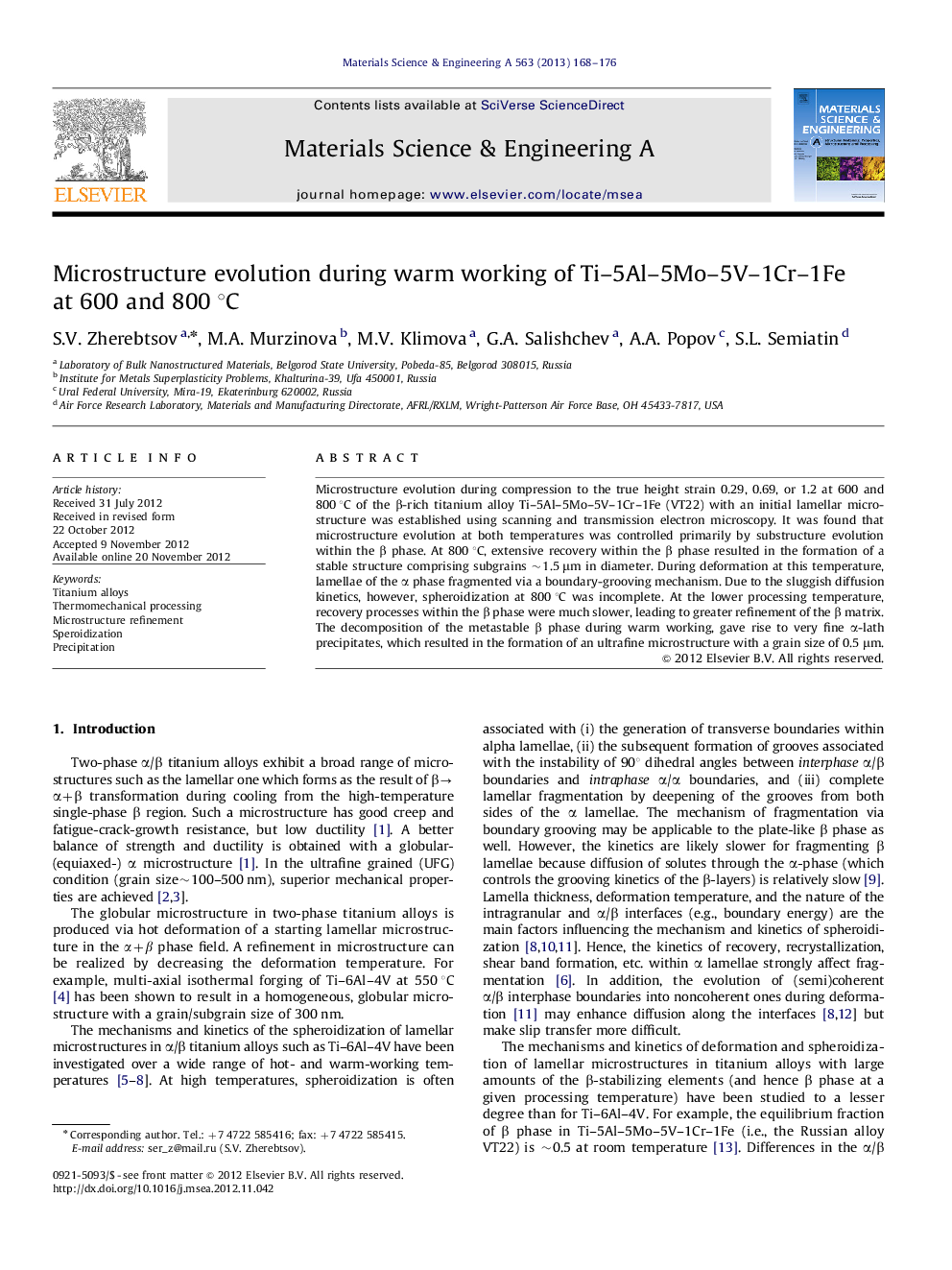| Article ID | Journal | Published Year | Pages | File Type |
|---|---|---|---|---|
| 1576442 | Materials Science and Engineering: A | 2013 | 9 Pages |
Abstract
Microstructure evolution during compression to the true height strain 0.29, 0.69, or 1.2 at 600 and 800 °C of the β-rich titanium alloy Ti-5Al-5Mo-5V-1Cr-1Fe (VT22) with an initial lamellar microstructure was established using scanning and transmission electron microscopy. It was found that microstructure evolution at both temperatures was controlled primarily by substructure evolution within the β phase. At 800 °C, extensive recovery within the β phase resulted in the formation of a stable structure comprising subgrains â¼1.5 μm in diameter. During deformation at this temperature, lamellae of the α phase fragmented via a boundary-grooving mechanism. Due to the sluggish diffusion kinetics, however, spheroidization at 800 °C was incomplete. At the lower processing temperature, recovery processes within the β phase were much slower, leading to greater refinement of the β matrix. The decomposition of the metastable β phase during warm working, gave rise to very fine α-lath precipitates, which resulted in the formation of an ultrafine microstructure with a grain size of 0.5 μm.
Related Topics
Physical Sciences and Engineering
Materials Science
Materials Science (General)
Authors
S.V. Zherebtsov, M.A. Murzinova, M.V. Klimova, G.A. Salishchev, A.A. Popov, S.L. Semiatin,
